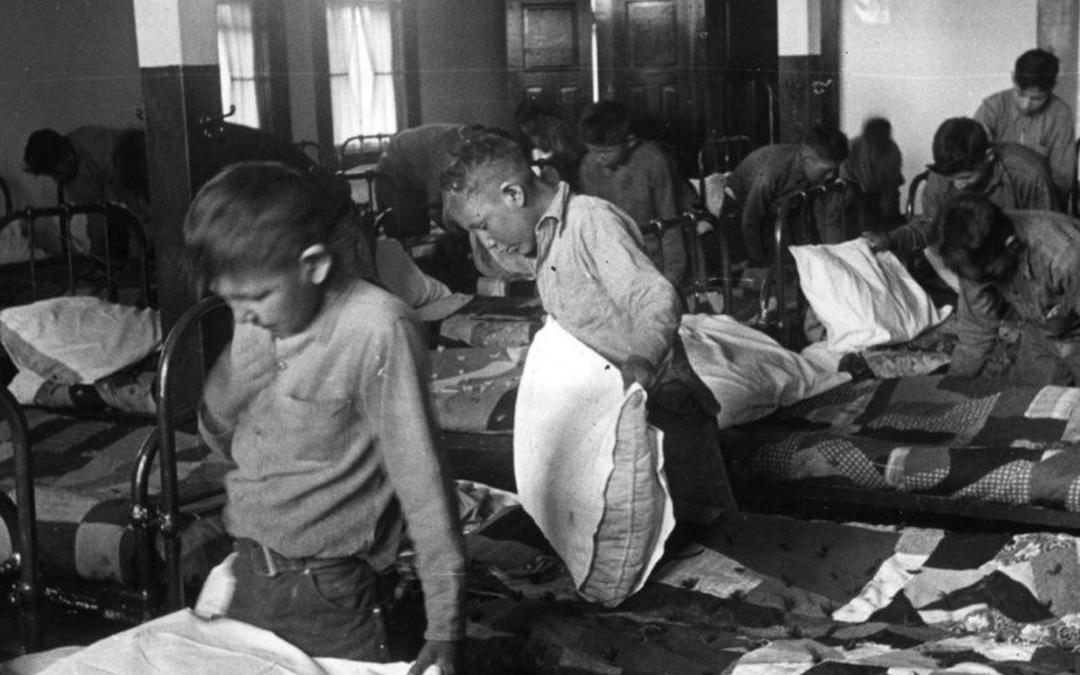I’m sure we all hear it (too) often.
Our children’s sense of right and wrong is definitive and categorical, with little room for nuance or consideration. In my house, there is nothing cuter than an indignant 7-year-old arguing for moral or ethical justice in the social interactions of her peers.
Whether she is defending or prosecuting, her issues are very serious. And we struggle not to be distracted by her yumminess. And by the very big and profound contentions and controversies expressed from her very small body.
While we’re dying from laughter on the inside.
Alongside this enthusiasm and preoccupation with absolutes, children are readily drawn in to lessons in compassion and empathy. In grade 2, my daughter was fascinated by the unit she did in French on Helen Keller. First, the Hebrew teacher taught them the blessing in the morning prayers – Blessed are You, God our Lord, King of the Universe, Who opens the eyes of the blind – and she brought in a braille prayer book for the children to examine. And then, in French, the children read about a little girl who couldn’t hear or see or talk.
My daughter had a lot of information to share with me – about what Helen could or couldn’t do how that affected Helen and made her feel, and what Helen’s challenges were. She also had a lot to say about Helen’s teacher and her struggles and how Helen felt about her teacher.
I could tell that my daughter was looking at her own world in a new way.
Without help, she found and printed out the hand signs for all the letters of the alphabet, and after learning how to spell everyone’s name in sign language, has begun answering questions by “sign-spelling” her answers.
What would you like to drink? She signs “m-i-l-k.”
Unfortunately, no one else in the house has memorized the sign alphabet with her, and thankfully, she can use her delightful voice to “translate” her signing.
This week’s parashah begins with the command to the children of Israel: You shall be holy, for holy am I, the Lord, your God.
What follows is a collection of, what some have said are, the Torah’s essential teachings:
Revere your parents; Keep Shabbat; Love your neighbour as yourself; Don’t gossip; Don’t take revenge; Don’t bear a grudge; and many others. They call on the people to aim for the highest standard of behaviour and in so doing, imitate God and fulfill the command to be holy themselves.
An essential reflection of this holiness is in the negative commandment: You shall not place a stumbling block in front of a blind person. Even in grade 2, I am certain the children could explain the significance of the literal meaning of the verse – if someone cannot see where they are going, don’t put something in their path for them to trip over.
The rabbis, however, intuited many more figurative interpretations from this aphorism:
If he asks, “Is the daughter of so and so fit to marry a priest?” Do not say she is fit, when she really is not. If he asks your advice, do not mislead him and say, “Leave early,” and then robbers will accost him, or “Leave at noon,” and then he might be struck by the sun. Don’t tell him, “Sell your field and buy a donkey,” and then deceitfully, extort the donkey from him.
The rabbis explained that deliberately providing misinformation, giving advice you know is bad or harmful or deceiving someone purposefully, at your own initiative, also constitute putting a stumbling block in front of a blind person. Your motives and intentions are hidden and therefore, the people with whom you are interacting are blind before you.
In the Talmud, the rabbis asked: Where does the Torah allude to the duty of marking graves?… Abaye said: You shall not put a stumbling block in front of a blind person.
Here the rabbis were concerned that a priest – forbidden from entering a cemetery – might do so unknowingly if the gravesite was unmarked. So if an individual knew there was an unmarked cemetery and did nothing about it, he too has put a stumbling block before a blind person.
According to the rabbis, the negative commandment to not put an obstacle also contains an implicit positive commandment to take responsibility for people and places in our midst. It’s not an excuse to say, “it was not my business, not my concern, or not my place.” Ultimately, we must refrain from putting obstacles as well as be vigilant to remove obstacles that may be in the way – even if we ourselves had no personal involvement in their placement.
The layers of interpretation within this verse exemplify the qualities of holiness to which we are commanded to strive. We must be conscious and eager and aware of what constitutes an obstacle and who may be blind.
And only when we can put ourselves in someone else’s shoes and imagine their life and their world, can we truly protect them from the stumbling blocks of every day.
It’s this combination of compassion and empathy and sense of responsibility that elevates our holiness and reflects the image of God in which we were created.
And sometimes even the signs need translation.
Shabbat Shalom.













